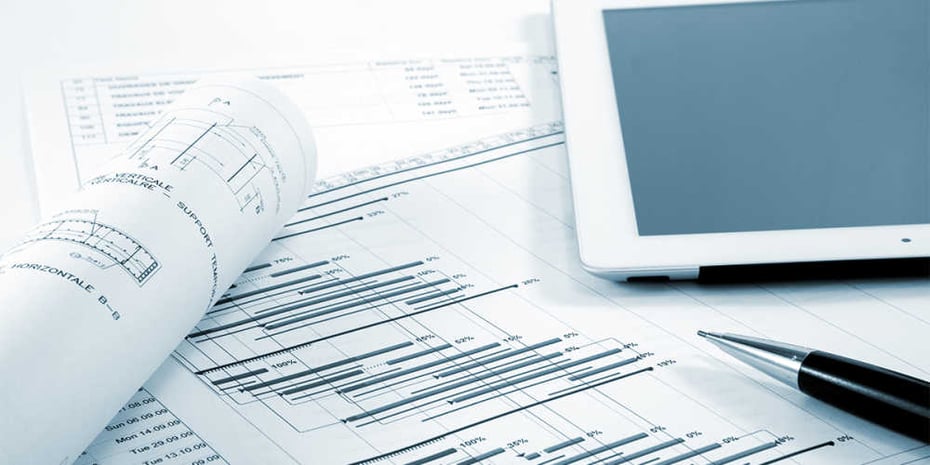Architect's Overview to Simplifying Building And Construction Paper Administration for Efficient Project Execution
The procedure of organizing, sharing, and preserving these records can frequently become a labyrinth of inefficiencies and problems if not taken care of thoroughly. By exploring systematic methods, ingenious devices, and industry ideal methods, designers can not just simplify their file monitoring procedures but likewise lead the method for extra efficient task execution.
Relevance of Efficient Paper Management
Why is efficient file administration critical for engineers in the building market? Reliable document management is important for designers in the construction market as it plays a pivotal role in ensuring the effective execution of jobs. Designers handle a large range of papers, ranging from style drawings and specs to licenses and contracts. Proper organization and monitoring of these records are crucial to keep project timelines, make certain conformity with laws, and promote reliable interaction amongst job stakeholders.

Reliable document management enables architects to access crucial information promptly, track project progression properly, and minimize dangers connected with mistakes or omissions. By applying structured paper administration processes, architects can boost cooperation with customers, specialists, and other employee, bring about boosted job results and client complete satisfaction.
Moreover, reliable record monitoring aids designers maintain a detailed job history, enabling them to leverage past lessons and experiences found out for future jobs. In today's hectic building and construction sector, where timely decision-making and details sharing are critical, effective document monitoring is a cornerstone for success.
Techniques for Improving File Company
Reliable record monitoring methods not only make certain task success for engineers in the building and construction sector but also lay the foundation for implementing strategies for streamlining paper organization. To simplify file company efficiently, engineers ought to initially develop a clear naming convention for folders and documents. Consistency in naming documents based upon project stages, file kinds, and appropriate info will certainly facilitate very easy retrieval and decrease confusion.
Utilizing cloud-based storage services can likewise boost record company by giving a central area for all project-related documents - construction document management. This permits staff member to access one of the most updated papers from anywhere, advertising partnership and effectiveness. Applying variation control devices better improves record company by tracking changes, stopping contrasting edits, and guaranteeing that the newest variations are constantly readily available
Furthermore, producing a sensible folder structure with assigned subfolders for different paper groups, such as specifications, illustrations, and contracts, can enhance file management procedures. On a regular basis examining and purging redundant or outdated documents will certainly help maintain a lean and organized file repository, inevitably enhancing performance and project end results.
Leveraging Innovation Devices for Partnership
In the world of contemporary style, designers are increasingly counting on advanced innovation tools to cultivate seamless partnership amongst project stakeholders. Leveraging modern technology for collaboration simplifies communication, improves performance, and improves total project results. Cloud-based systems such as BIM 360 and Procore allow real-time accessibility to task records, enabling customers, engineers, and specialists to team up efficiently regardless of their physical place. These devices facilitate concurrent modifying, variation control, and immediate updates, published here lowering delays and mistakes brought on by miscommunications.
Digital layout and building and construction (VDC) software program like Revit and AutoCAD Architecture allow designers to create comprehensive 3D versions that can be shared and edited collaboratively. This real-time collaboration boosts style read this sychronisation, visualization, and accuracy, leading to much better decision-making throughout the task lifecycle. Furthermore, communication tools like Slack and Microsoft Teams provide immediate messaging, file sharing, and video conferencing capabilities, fostering smooth interaction amongst team participants and stakeholders.
Making Sure Precision and Version Control

Efficient variation control also assists in managing paper approvals and guaranteeing that just licensed personnel make alterations. Architects must establish clear protocols for recording adjustments, consisting of timestamps and customer recognition, to create an audit trail for responsibility. On a regular basis connecting with the project team about version updates and changes is necessary to avoid confusion and maintain alignment throughout the construction process.
Ideal Practices for Paper Sharing and Access
Having developed a robust system for version control in building and construction file monitoring, designers can now focus on maximizing document sharing and access approaches to improve collaboration and performance amongst project stakeholders. These platforms provide real-time access to task records, making it possible for team members to check out, modify, and comment on data concurrently.
Moreover, carrying out role-based accessibility control is important for keeping information safety and security while facilitating cooperation. Assigning different consent levels to team members ensures that sensitive information is only accessible to licensed employees. Consistently upgrading accessibility permissions based upon task needs and team adjustments is vital for maintaining information stability.
Integrating project monitoring software program with file sharing platforms can also enhance workflows. This integration permits seamless communication, task monitoring, and record management within a single interface, minimizing the requirement to change between multiple tools. By following these finest techniques, engineers can create a much more reliable and collaborative file sharing atmosphere, inevitably causing effective job implementation.

Final Thought
To conclude, effective construction document monitoring is crucial for successful task execution. By executing strategies for organization, leveraging technology tools for cooperation, making certain accuracy and variation control, along with adhering to best practices for file sharing and gain access to, designers can enhance their process and boost helpful resources total task efficiency. Prioritizing these elements of document monitoring will certainly lead to smoother task implementation and better end results for all stakeholders involved.
Reliable record management is crucial for architects in the building sector as it plays a critical duty in making sure the successful implementation of tasks. construction document management. Proper organization and management of these documents are important to keep task timelines, make certain compliance with laws, and promote reliable communication amongst job stakeholders
Reliable paper administration practices not just make sure task success for engineers in the building and construction sector but also lay the foundation for implementing approaches for improving record organization. One crucial approach is establishing a centralized paper repository where all team members can access the newest variations of illustrations, specs, and various other project records.Having established a durable system for variation control in building paper management, engineers can now focus on enhancing paper sharing and gain access to methods to enhance collaboration and effectiveness among task stakeholders.